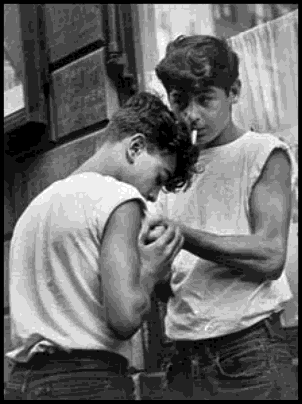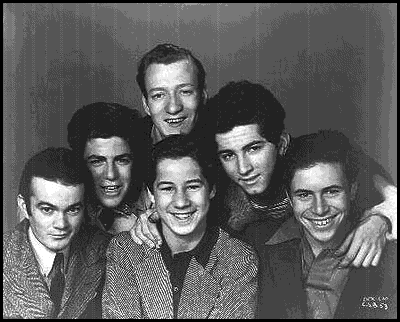"What Did You Do?" "Nothing."
Robert Paul Smith
(Norton)

It's one man's memories of childhood in and around New York City, before, during and after WWII. It tells of boys from the boroughs playing step-ball and "mumbly-peg," offers varied uses for laundry cords (to tie up friends and sisters), explains things you can do with spools of thread after the thread is gone.
There is a certain winsomeness to all this: kids giving each other hickeys and building secret hiding-places on vacant lots and stepping on sister's hand on purpose (we assume) as she is lying there on the living-room floor reading the Sunday comics. It is also about getting in fist fights (daily) with someone down the street named Charlie Pagliaro.
There is a post-WWII charm here but there is also the disparagement of later generations with their Little League teams and mothers and fathers who don't let their kids wander the streets and modern-day nervous parents worrying about "sibling rivalry," regularly visiting and seeking advice from "family counselors and child psychologists."
This was written over fifty years ago so the author is allowed to say as a joke I guess, "I don't think kids beat up on each other as much as they used to, just the way you don't see fights between men as much as you used to."
- But generally I don't think kids get whipped any more, I don't think as many husbands put the slug on their wives as used to...
There is a hint here of nostalgia for men who bopped their kids and bonked their wives. Mothers, when they are not being "slugged," do the laundry and listen to gossip. The fathers are not very cuddly, certainly not with their children (nor with their wives).
War between "playmates" was not only accepted ... it was ritualized and labeled: "old-fashioned arm-twisting," "frog-marching" and "The Drill, the Hammerlock, the Toe-Lock" and "Punching the Muscle:"
- a series of punches, as hard as possible, in the muscle of the upper arm until a kind of paralysis set in.

- You were on top. You placed a knee in each of the underdog's elbows, as you sat on his stomach. You beat, alternately with each clenched fist, on his breast bone until he cried or you were tired, or somebody came along.
Since I was the "underdog" ten times out of ten, and even if it was harmless and innocent fun, at times the kids described here remind me of those everyday monsters culled from yet another best-selling book of the day, Life Among the Savages.
Smith claims to have read the complete twenty volume edition of Mark Twain not once but over and over again ... but, if so, he missed something very important: a sense of drollery, a touch of self-mockery, an underlying humanity and delicate irony that can turn bitter recollections into (often) very funny ones.
There are a few moments where the author manages to touch a chord, like "the flyleaf of my schoolbooks" with "my name, my street, my town, my country, my state, my country, my continent, my hemisphere, my planet, my solar system."
- And let no one dissemble: it started out with me, the universe was the outer circle of a number of concentric rings, and the center point was me, me, me, sixty-two pounds wringing wet with heavy shoes on.
Which is, I suggest, exactly the message I am trying to convey here.